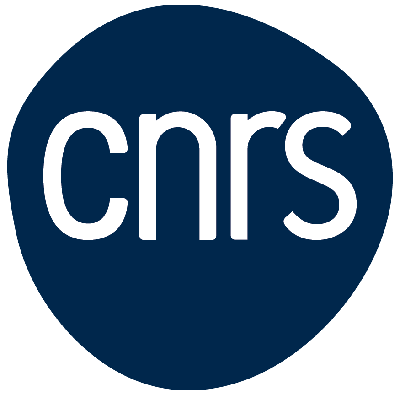GDRI ATOM
Présentation
Les textiles accompagnent l’homme tout au long de sa vie de ses langes à son linceul et le protège des variations climatiques. L’artisanat du textile est plus ancien que celui de la poterie ou de la métallurgie, et il a persisté dans sa forme traditionnelle pour des millénaires jusqu’au tout début de la révolution industrielle, qui a totalement changé la technologie textile, sa production et son organisation. Les textiles occupaient aussi une place complexe dans les sociétés anciennes et traditionnelles et ne peuvent être réduits à leurs aspects pratiques.
Le GDRI Ancient Textiles from the Orient to the Mediterranean (ATOM) a pour but de cerner à la fois l’impact de la production textile sur l’environnement au travers de l’agriculture, de l’élevage et de la manipulation des ressources, son rôle dans l’artisanat, dans le commerce, et plus généralement dans l’économie, mais aussi l’utilisation des textiles dans la construction du genre et des identités individuelles et collectives. La période chronologique considérée s’étend de la Protohistoire à la fin de l’Antiquité. La zone géographique concernée par le projet couvre l’Orient (Chine, Asie centrale et Proche-Orient) et le bassin méditerranéen. Cette vaste zone, et plus particulièrement la région du Croissant Fertile, a vu les débuts de l’agriculture et de l’élevage, ainsi que le développement des techniques antiques de filage et tissage. C’est en Mésopotamie que sont nées les manufactures textiles centralisées, organisées selon une division complexe du travail.
Il s’agit de développer de nouvelles approches interdisciplinaires pour l’étude des textiles dans des régions où ils n’ont pas toujours été préservés, combinant les données archéologiques (étude scientifique et bioarchéologique des restes textiles, analyse des empreintes de textiles, des outils, des installations, etc.), les expérimentations archéologiques, les enquêtes ethnographiques comparatives, les données textuelles et iconographiques. Ce projet réunit des équipes de recherches affiliées au CNRS, des universités, des musées nationaux et un centre d’excellence spécialisé dans les recherches sur les textiles.
Le GDRI ATOM a pour but de faciliter les contacts entre chercheurs travaillant sur les textiles antiques. Une approche systématique de l’artisanat textile antique impliquant tous les spécialistes permettra de brosser une image exhaustive de l’impact économique et culturel des textiles et de la production textile sur la société et sur l’environnement. En outre, cette recherche sera intimement liées dans des activités d’enseignement pour les étudiants et pour les collègues des institutions impliquée, par exemple dans l’organisation conjointe de « Master classes ». Les étudiants qui envisagent des Masters et Doctorats sur ces thématiques bénéficieront du réseau de recherche ATOM qui facilitera les échanges.
Partenaires
Archéologies et Sciences de l’Antiquité (ArScAn), UMR 7041 (CNRS/Université Paris Nanterre/Université Paris1/MCC), France
Cécile Michel, directrice de recherche, CNRS, Coordinator of the GDRI ATOM
Damien Agut, chargé de recherche, CNRS
Barbara Couturaud, chercheure associée
Corinne Debaine-Francfort, directrice de recherche, CNRS
Xavier Faivre, ingénieur de recherche, CNRS
Francis Joannès, professeur, Paris 1
Louise Quillien, doctorante, Paris 1
Françoise Rougemont, chargée de recherche, CNRS
Aline Tenu, chargée de recherche, CNRS
Environnements et sociétés de l’Orient ancien (ARCHEORIENT), UMR 5133 (CNRS/Université Lyon 2), France
Philippe Abrahami, maître de Conférences, Lyon 2
Laura Battini, chargée de recherche, CNRS
Corinne Castel, chargée de recherche, CNRS
Jwana Chahoud, post-doct., chercheur associé
Moussab al Besso, doctorant, Lyon 2
Valérie Matoïan, chargée de recherche, CNRS
Emmanuelle Vila, chargée de recherche, CNRS
Pierre Villard, professeur, UPB
Centre de recherches historiques (CRH), UMR 8558 (CNRS/EHESS) France
Sophie Desrosiers, maître de Conférences, EHESS
Cecilia d’Ercole, directrice d’études, EHESS
Etienne de la Vaissière, directeur d’études, EHESS
Jean-Michel Carrié, directeur d’études émérite, EHESS
Centre d’Histoire « Espaces et Cultures » (CHEC), EA 1001, (UPB), France
Catherine Breniquet, professeure, UPB
Fabienne Colas-Rannou, maître de Conférences, UPB
Laurence Riviale, maître de Conférences, UPB
Center for Textile Research, (University of Copenhagen), Denmark
Eva Andersson Strand, Associate Professeur, University of Copenhagen
Nicole Brisch, Associate Professeur, University of Copenhagen
Cecilie Brøns, researcher Ny Carlsberg Glyptotek and CTR
Flavia Carraro, Marie Sklodowska Curie Fellow, CTR
Joanne Cutler, Marie Curie Fellow, CTR
Giovanni Fanfani, associate researcher
Peder Flemestad, research assistant CTR
Ellen Harlizius-KLück, associate researcher, CTR
Hedvig Landenius Enegren, Marie Curie Fellow, CTR
Romina Laurito, Marie Curie Fellow, CTR
Susanne Lervad, associate researcher, CTR
Marie-Louise Nosch, Professor, University of Copenhagen
Maria Papadopoulou, Marie Curie Fellow, CTR
Kaliopi Sarri, Marie Curie Fellow, CTR
Caroline Sauvage, Marie Curie Fellow, CTR
Malgorzata Siennicka-Rahmstorf, Marie Curie Fellow, CTR
School of Archaeology and Ancient History (University of Leicester), United Kingdom
Lynn Foxhall, Professor, SAAH
Mary Harlow, Senior Lecturer, SAAH
David Mattingly, Professeur, SAAH
External interested participants
Histoire Archéologie Littératures des mondes chrétiens et musulmans médiévaux (CIHAM) UMR 5648
Dominique Cardon, directrice de recherche émérite
Histoire Archéologie Littérature des Mondes Anciens (HALMA) UMR 8164
Brigitte Lion, professeur Lille 3
Musée du Louvre. Département des Antiquités Orientales, Paris
Ariane Thomas, conservatrice
Sophie Cluzan, conservatrice
Musée du Quai Branly, Paris
Christophe Moulhérat, chercheur
Museum National d’Histoire Naturelle, Paris, Archéozoologie, archéobotanique : sociétés, pratiques et environnements (AASPE) UMR7209
Margareta Tengberg, professeure
Antoine Zazzo, chargé de recherche, CNRS
Charlène Bouchaud, post-doc., Idex SUPER
Musée des tissus et des arts décoratifs, Lyon
Maximilien Durand, directeur du Musée
Musée Bargoin, Clermont-Ferrand
Christine Bouilloc, directrice du Musée
Centre de Recherche et de Restauration des Musées de France (CR2RMF), Champs-sur-Marne
Witold Nowik, chargé de recherche, Ministère de la Culture et de la Communication
Centro de Ciencias Humanas y Sociales. Departamento de Estudios de Próximo Oriente Antiguo, CSIC, Madrid, Spain
Juan Pablo Vita, Científico Titular
Università di Roma « La Sapienza » Dipartimento di Scienze dell’Antichità, Roma, Italy
Maria Giovanna Biga, Associato Professeura
Leibnitz Universität, Historisches Seminar, Hannover, Germany
Beate Wagner-Hasel, Professor
Archeotex, Ennenda, Switzerland
Antoinette Rast-Eicher, Researcher
Programme scientifique
Le projet s’organise en six axes liés les uns aux autres et qui seront conduits de manière simultanée, coordonnés par des équipes internationales, et via des missions de terrain ou en musée, des journées d’études et des colloques, des séminaires de recherche et des publications communes
- Techniques textiles
- Production textile dans le Proche-Orient du Bronze Moyen : approche interdisciplinaire
- Terminologies textiles
- Textiles et genre
- Textiles dans les rituels et pratiques cultuelles
Le sixième axe porte sur l’enseignement et la valorisation des recherches.
Actualités
2018
4-6 octobre 2018: International Conference on « Textiles & Gender: Production to wardrobe from the Orient to the Mediterranean in Antiquity »
Maison Archéologie et Ethnologie, Nanterre. Organised by Mary Harlow and Cécile Michel. Secretary: Louise Quillien
Textiles and gender intertwine on many levels, from the transformation of raw materials into fabric at one end, to dress and garments, and the construction of identity at the other.
Textile production in antiquity has often been considered to follow a linear trajectory from a domestic (female) activity to more ‘commercial’ or ‘industrial’ male-centred mode of production. In reality, many modes of production probably co-existed and the making of textiles is not so easily grafted onto the labour of one sex or the other. Some elements of the chaîne operatoire have been assigned to either men or women. It is rare, for instance, to find a culture where men did the spinning –there is however an attestation of this in the South of Iraq – and at the other end of the process, equally rare to find female fullers. At times and in some places, weaving was women’s work, but in other times and places it was the prerogative of men. Labour organization depends on who learns what, where, and how. Children of both sexes could be involved in some parts of the textile chaîne opératoire at home with their mother or father (fibre preparation, spinning or weaving), or adults could learn with someone who is already qualified. Learning involves also cognitive aspects. We would like to understand these process across Antiquity in the different cultures that are encompassed by our period. The production of textiles can indeed inform us of the relationships between gender, labour, economics and, in some cases, the potential for the prosperity of a family.
In other areas of life textiles transformed into garments express the gender of the wearer. Dress and gender are intimately linked in the visual and textual records of antiquity; it is common practice in both art and literature to use particular garments to characterise one sex or the other, and to undermine literary characterisations by suggesting that they display features usually associated with the opposite gender. Despite the fact that clothing shapes were simple (tunics and rectangular or curved-edge mantles) for both women and men, each sex looked very different. This difference was socially and culturally important and expressed in the type of textile used, the length of the tunic, the manner in which it was decorated or undecorated, belted or unbelted, use of colour and most fundamentally in the manner of draping or fastening. Body language was also defined by clothing and socially prescribed gendered roles. A person should have no doubt as to the sex of another person he or she might meet and cross-dressing or dressing in a manner perceived to be ‘manly’ (if a woman) or ‘effeminately’ (if a man) implied an insult and an inability to act in the proper culturally defined gendered way. As, despite their shared shaping, male and female clothing had to be demonstrably different, from the outset spinners and weavers were making choices about the type of wool and weave required – and we might add dyers into the mix. This puts gender at the very basis of textile work from the outset to the end product. Gender divisions were fundamental to ancient society (although they did not work in the same way in every culture) and their expression in textiles and clothing equally fundamental. The human race is hard wired for adornment thus even among the poorest classes the opportunity for some personalised and decorative aspect has to be taken into account.
The conference will examine the gender division of work in the production of textiles, as well as attitudes to dress and gender across the Near East and Mediterranean culture in antiquity (c. 3000 BCE-300CE), tracing both cross-cultural and culturally specific associations.
This conference is the concludingmeeting of the GDRI ATOM and a follow up event of the international research seminar on Gender and textiles which took place in Nanterre during the first semester of 2015 within the frame of the Séminaire d’Histoire et Archéologie de l’Orient Ancien (SHAMO) and the international workshop organised at the University of Leicester in April 2017 on “Textiles, Dress and Gender in the Ancient World.”
Programme of the conference : T&G conference programme
Abstracts of the conference : T&G conference abstracts
***
18-22 juin 2018: Writing workshop at the Commanderie de Jalès, Berrias-Casteljau:
Suite de la rédaction à huit mains d’une étude intitulée: « Red Dyes and Coloured Textiles in Cuneiform Texts »
Philippa Abrahami, Nicole Brisch, Cécile Michel et Louise Quillien
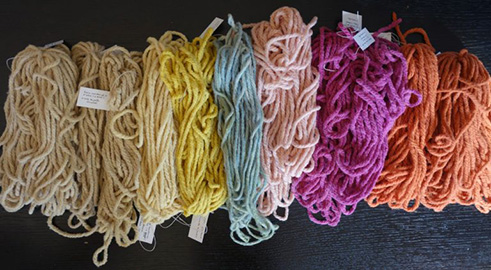
***
14-18 mai 2018: Marie Skłodowska-Curie Masterclass (ArScAn, MAE, CNRS, Paris 1, Paris Nanterre): Une nouvelle initiative pour attirer les jeunes talents
L’UMR Archéologies et Sciences de l’Antiquité (ArScAn), en collaboration avec la Maison Archéologie & Ethnologie, René-Ginouvès (Nanterre), organise du 14 au 18 mai 2018 une seconde édition de Masterclass à destination de candidats à une bourse individuelle Marie Skłodowska-Curie (MSC IF). L’objectif est de préparer de jeunes collègues étrangers, préalablement identifiés et sélectionnés sur pré-projet, à soumettre une candidature en réponse à cet appel à projets européen dédié au renforcement du parcours professionnel des chercheur, et à préparer les post-doctorants d’ArScAn à préparer leurs candidatures pour des laboratoires à l’étranger.

Masterclass MSC IF organisée par :
- Cécile Michel, Directrice de Recherche au CNRS, historienne du Proche-Orient cunéiforme, ArScAn, UMR 7041
- Laurence Quinty, CNRS, Service Valorisation et Partenariats, MAE, USR 3225
En collaboration avec les représentants des services d’accompagnement de la recherche des institutions hôtes :
- Nizar Larabi, Service Partenariat et Valorisation, CNRS – Délégation Île-de-France Ouest & Nord
- Sandra Mereu, Aide au montage de projets de recherche, Direction de la recherche et de la valorisation, Université de Paris 1 Panthéon – Sorbonne
- Miguel Angel Rodriguez Lizana, Responsable du service de valorisation et appui à la recherche, Université Paris Nanterre
***
8-9 mars 2018: Textile production in Kültepe. A CTR interdisciplinary workshop
Le Centre for Textile Research vous convie à un séminaire interdisciplinaire centré sur la production textile à l’Âge du Bronze à Kültepe, en Anatolie.
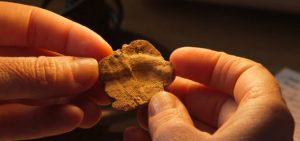
Ce séminaire se tient à l’Université de Copenhague.
2017
16-20 octobre 2017. Ecole thématique TexAntiques
« Textiles anciens: matériaux, techniques, économie et usages » inscription avant le 1er juillet 2017 (ci-dessous)
(Maison Internationale Universitaire de Clermont-Ferrand)
Les recherches sur les textiles se sont développées depuis une décennie pour former un nouveau champ disciplinaire pour lequel des compétences techniques sont indispensables pour prendre en compte et interpréter des sources variées : archéologiques, environnementales, textuelles, iconographiques… Cette école thématique propose une formation tenant compte des nouvelles méthodes de la recherche. Les cours et ateliers pratiques donnés par des historiens, archéologues, historiens de l’art, archéobotaniste et archéozoologue et spécialistes en muséologie sont répartis selon trois thèmes principaux:
– Matériaux et techniques textiles, modalités de conservation et de découverte archéologiques
Les premiers textiles sont faits de fibres végétales, en particulier le lin cultivé dès le début de l’agriculture (ca. 9 000 av. J.-C.). L’exploitation de la laine est une conséquence de la domestication et de pratiques sélectives au sein des cheptels. La laine a joué un rôle de premier plan dans les innovations techniques (nouvelles méthodes de filage, invention du métier à tisser vertical). Dans ce bloc seront présentées les différentes techniques appliquées à la découverte de textile, à leur préservation et à leur étude. Un atelier sera consacré aux expérimentations archéologiques sur les textiles.
– Rôle économique des fibres et des textiles, société et environnement
Ce bloc sera organisé à partir de l’exemple du Proche-Orient ancien principalement. Les grandes manufactures textiles voient le jour dès le IIIe millénaire, avec des quotas de rendement et de production et une organisation du travail qui met en jeu un personnel servile majoritairement constitué de femmes et d’enfants. La laine, outre son usage comme principal matériau de tissage, est distribuée comme rémunération aux travailleurs. Le commerce international des textiles se développe au début du IIe millénaire en parallèle avec les échanges de cadeaux diplomatiques. Au Ier millénaire, les produits tinctoriaux font l’objet d’échanges internationaux et la laine sert à financer le commerce avec l’extérieur. Il s’agira de montrer l’impact de ces transformations qui ont radicalement modifié l’environnement naturel (introduction des pratiques de transhumances, apparition d’espèces adaptées à la steppe, complémentarité des écosystèmes), le paysage politique et les réseaux d’échanges internationaux à travers le Proche-Orient et l’Est de la Méditerranée. L’atelier consacré à « textile et genre » traitera de la part des femmes dans la production textile, mais aussi du genre du vêtement à partir des textes et de l’iconographie.
– Terminologies textiles, usage des textiles
Les terminologies et classifications en usage ont été pour beaucoup inspirées des textiles et instruments actuels, ne correspondant pas exactement à ceux du passé. Ainsi, il est d’usage de voir confondus, dans notre vocabulaire, textiles et tissus. Or, cela est source de confusions. Des définitions et principes de base préalables sont donc à poser. Le textile entendu comme toute construction fibreuse souple s’avère être une catégorie plus englobante, permettant d’inclure les non-tissés comme le feutre ou les productions à l’aiguille. De très nombreux termes décrivent les textiles, leurs techniques et leurs usages. À travers cette terminologie complexe on perçoit les contacts, les innovations, les routes commerciales et les structures économiques des sociétés pré-monétaires. Les terminologies textiles naissent et se développent en parallèle avec les innovations techniques, les découvertes, les modes et les réseaux commerciaux. Il s’agira de donner des clés et une méthodologie pour interpréter et analyser ce vocabulaire. La documentation textuelle cunéiformes et les textes en linéaire B serviront d’exemples pour illustrer l’étude terminologique. Par ailleurs, les usages des textiles sont extrêmement nombreux et variés : vêtements, ameublement, transport de biens, voiles de bateaux, etc. Une étude combinée du vocabulaire, des artefacts et de l’iconographie permet de mieux appréhender ces multiples usages.
Formulaire d’inscription TexAntiques à renseigner et renvoyer avant le 1er juillet 2017 à cecile.michel@cnrs.fr
***
19-23 juin 2017: Writing workshop at the Commanderie de Jalès, Berrias-Casteljau:
Rédaction à huit mains d’une étude intitulée: « Red Dyes and Coloured Textiles in Cuneiform Texts »
Philippa Abrahami, Nicole Brisch, Cécile Michel et Louise Quillien
***
15-19 mai 2017: Marie Skłodowska-Curie Masterclass (ArScAn, MAE, CNRS, Paris 1, Paris Nanterre): Une nouvelle initiative pour attirer les jeunes talents
L’UMR Archéologies et Sciences de l’Antiquité (ArScAn), en collaboration avec la Maison Archéologie & Ethnologie, René-Ginouvès (Nanterre), a organisé du 15 au 19 mai 2017 une Masterclass à destination de candidats à une bourse individuelle Marie Skłodowska-Curie (MSC IF). L’objectif était de préparer de jeunes collègues étrangers, préalablement identifiés et sélectionnés sur pré-projet, à soumettre une candidature en réponse à cet appel à projets européen dédié au renforcement du parcours professionnel des chercheurs.
Au cours de cette Masterclass, ces jeunes chercheurs ont eu plusieurs entretiens personnalisés sur leur projet avec, à la fois leur futur responsable scientifique, des experts et les représentants des services d’accompagnement de la recherche de chacune des tutelles impliquées : DR 5 du CNRS, Université Paris 1 Panthéon – Sorbonne, Université Paris Nanterre. Ces échanges personnalisés ont alterné avec des présentations sur les différents aspects du dossier de candidature, sur les institutions-hôtes, les structures d’appui aux projets européens, ainsi que sur certains points-clés du dossier tel que l’Open Access. Cette Masterclass a également pu bénéficier de l’expérience d’un boursier MSC IF récemment accueilli dans le laboratoire ArScAn.
Avant même le dépôt final des projets des candidats et les résultats de l’appel d’offres MSC IF, de l’avis de tous les participants, cette première édition fut très positive. Candidats et responsables scientifiques ont appris à mieux se connaître et à mieux maîtriser les aspects divers d’une candidature à un projet européen. En outre, les candidats ont pu se familiariser avec leur future institution d’accueil et ont désormais tous les éléments en main pour améliorer et finaliser leur projet.
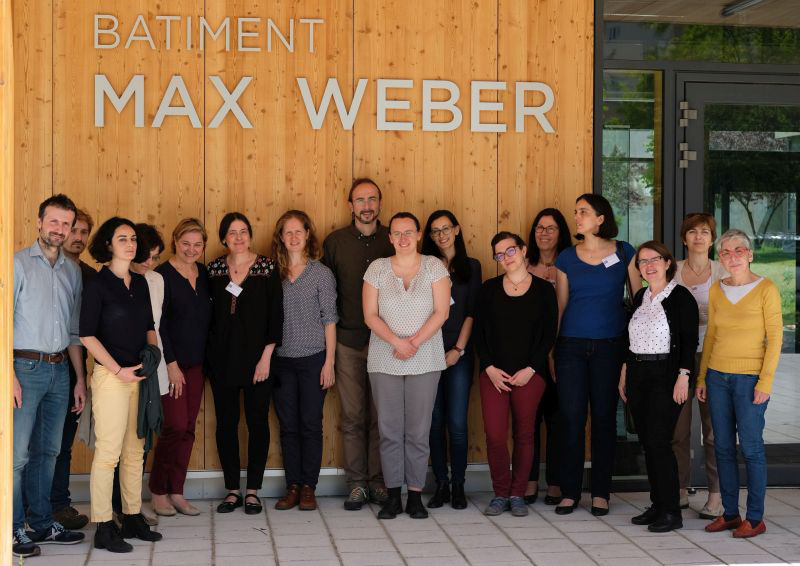
Masterclass MSC IF organisée par :
- Cécile Michel, Directrice de Recherche au CNRS, historienne du Proche-Orient cunéiforme, ArScAn, UMR 7041
- Laurence Quinty, CNRS, Service Valorisation et Partenariats, MAE, USR 3225
En collaboration avec les représentants des services d’accompagnement de la recherche des institutions hôtes :
- Nizar Larabi, Service Partenariat et Valorisation, CNRS – Délégation Île-de-France Ouest & Nord
- Sandra Mereu, Aide au montage de projets de recherche, Direction de la recherche et de la valorisation, Université de Paris 1 Panthéon – Sorbonne
- Miguel Angel Rodriguez Lizana, Responsable du service de valorisation et appui à la recherche, Université Paris Nanterre
- Romane Cariou, Service de valorisation et appui à la recherche, Université Paris Nanterre
Autres experts :
Alexandra Legrand-Pinaud (USR 3225-MAE et UMR 7055 PRETECH), Pascale Linant de Bellefonds (ArScAn)
Autres intervenants :
Léa Bello (DR5 du CNRS), Astrid Brandt-Grau (Ministère de la Culture et de la Communication), Piero Gilento (Boursier MSC IF, ArScAn), Frédéric Hurlet (Directeur de la MAE), Pascal Marty (InSHS du CNRS), Lionel Maurel (Université Paris Lumières), Marie-Louise Nosch (Université de Copenhague), Anaïs Pamboukjian (Université Paris 1 Panthéon – Sorbonne), Koralia Pavlaki (CNRS, Point de Contact National), Laurence Quinty (USR 3225-MAE), Isabelle Rivoal (Université Paris Nanterre), François Villeneuve (Directeur d’ArScAn).
***
3-4 mai 2017: Le coton dans l’Ancien Monde: domestication, culture, usage et commerce (MNHN, Paris)
Muséum National d’Histoire Naturelle, 43 rue Buffon, 75005 Paris
Ce colloque est organisé par Charlène Bouchaud, Vladimir Dabrowski et Margareta Tengberg.
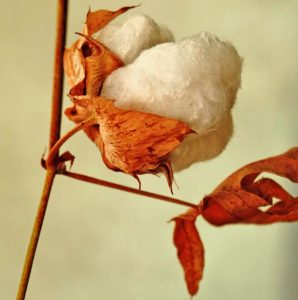
Ces rencontres ont pour vocation de réunir les acteurs de la recherche s’intéressant au coton sous différents aspects et relevant de champs disciplinaires variés (agronomie, anthropologie, archéobotanique, étude des textiles et des outils archéologiques, génétique, histoire, linguistique). L’objectif est de dresser un état des lieux de nos connaissances sur la domestication, l’émergence et la diffusion de la culture et des produits du coton – fibres, graines, huile, textiles, etc. – afin d’en dégager les apports récents, les questionnements en cours et les nouvelles propositions de recherche. Pour cette première édition, l’accent est principalement mis sur l’histoire des cotons cultivés de l’Ancien Monde, en particulier le sous-continent indien, le sud-ouest asiatique, l’Afrique et le bassin méditerranéen (Gossypium herbaceum et Gossypium arboreum) tout en s’intéressant aux études, méthodes et perspectives de recherche impliquant également les cotons américains (Gossypium barbadense, Gossypium hirsutum). Le cadre chronologique et géographique se veut le plus large possible afin d’appréhender, sur la longue durée, les dynamiques complexes ayant permis aux cotons sauvages originaires de régions tropicales de devenir des productions à haute valeur ajoutée au cœur des activités agricoles et économiques passées et modernes.
***
24-25 avril 2017: Textiles, Dress and Gender in the Ancient World (University of Leicester)
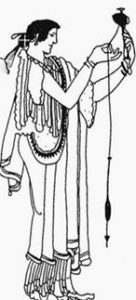
Vêtements et genre sont intimement liés dans les sources visuelles et textuelles de l’antiquité. Fréquemment, dans l’art et la littérature, on utilise des vêtements particuliers pour caractériser l’un ou l’autre sexe, ou on affuble certains personnages de vêtements d’habitude associés au sexe opposé. Ces références croisées étaient souvent utilisées à des fins comiques dans les scènes dramatiques. Le message clair, à travers les cultures de l’antiquité, était que les hommes devraient s’habiller comme les hommes, et les femmes comme les femmes.
Les études se sont moins intéressées au fait que certains textiles et couleurs étaient considérés comme plus adaptés aux hommes ou aux femmes. Les discussions sur le type et la qualité des textiles tendent à se concentrer sur le rôle du luxe et du statut social (ou sur la possible usurpation de statut), plutôt que sur le genre, bien que celui-ci soit souvent implicite dans toute discussion.
La production textile dans l’antiquité a souvent été considérée comme suivant la trajectoire linéaire depuis une activité domestique (féminine) vers un mode de production plus masculin, « commercial » ou « industriel ». En réalité, de nombreux modes de production existaient probablement en parallèle, et la fabrication des textiles ne peut être artificiellement greffée sur le travail de l’un ou l’autre sexe. Parfois et en certains lieux, le tissage était le travail des femmes, mais dans d’autres temps et lieux, c’était la prérogative des hommes.
Le colloque examinera les attitudes à l’égard des textiles, des vêtements et du genre du Proche-Orient à la culture méditerranéenne dans l’Antiquité (3 000 avant J.-C. – 300 après J. C.), en mettant en valeur les associations spécifiquement culturelles ou interculturelles
***
3-6 avril 2017: Session Textiles dans le cadre du Melammu symposia 11: « Evidence Combined – Western and Eastern Sources in Dialogue » (Finnish Institute in the Middle East, Beyrouth)
Session 4: « Textiles » organisée par Mary Harlow et Cécile Michel
L’artisanat textile est très ancien et a persisté, dans sa forme traditionnelle, pendant des millénaires jusqu’au début de la révolution industrielle. L’analyse des outils textiles peut aider à comprendre les techniques de filage et de tissage utilisées dans le passé, ainsi que les influences possibles et les échanges de pratiques qui peuvent avoir eu lieu entre l’Est et l’Ouest.Le textile accompagne l’homme tout au long de sa vie et, surtout sous la forme de vêtements, joue un rôle important dans la construction du genre, des identités individuelles et collectives. En dépit du fait que les formes de vêtements étaient simples, les différences sociales et culturelles pouvaient s’exprimer dans le type de matériau, les décorations, la longueur du vêtement. Les questions posées sont les suivantes : le langage du vêtement est-il universel dans l’antiquité ou bien peut-on relier certaines attitudes ou styles à des sources occidentales ou orientales ? Peut-on mettre en valeur des échanges ou des influences ?
Programme:
Hedvig Landenius Enegren: Textile and Textile Tool Expressions in 2nd and 1st millennium BCE Cyprus
Barbara Couturaud: How to understand a garment? Considerations on a feminine dress in Mari (IIIrd mill. BC)
Anne-Caroline Loisel-Rendu: Cloth and Gender in Akkadian Literature
Cecilie Brøns: Dress-codes in ancient Greek sanctuaries
2016
Colloque international les 3-4 novembre : « Identity in Mesopotamia, Sources and Methodology »
Second colloque organisé dans le cadre du France-Berkeley Fund avec la participation du GDRI ATOM. bât. Max Weber, rez-de-chaussée, salle 2 et Maison Archéologie et Ethnologie, salle 117D
***
Le jeudi de 14h à 16h du 22 septembre au 15 décembre : « Le textile au Proche-Orient ancien : production, traitement et circulation des matières premières »
Séminaire de Recherche de l’UMR Archéorient. Actualité des méthodes et des terrains au Proche-Orient, en collaboration avec le GDRI ATOM (Ancient Textiles from the Orient to the Mediterranean). Salle Joseph Reinach (4e étage), Maison de l’Orient et de la Méditerranée, Lyon.
***
27-28 septembre 2016 : « Le vêtement au Moyen Âge : de l’atelier à la garde-robe »,
Colloque organisé par le Groupe d’archéologie médiévale (GAM-EHESS)
***
29-31 août 2016 : « Dyes and Spices. Interdisciplinary exploratory international workshop », Copenhague et Lejre, Danemark.
This exploratory workshop will deal with the vocabulary used for dyes, mordents and spices. Textual data will be confronted to experimental archaeology: types of dye stuffs used in antiquity will be tested experimentally, and we will compare the results with ancient dye receipts, and explore the relationship between spices and dyes in ancient texts.
This workshop will start at Centre for Textile Research, SAXO-Institute, University of Copenhagen In this session various ancient textual sources about dyes and spices, will be presented by the organizers and by the participants. This includes Linear B, ancient Greek and Latin texts, and cuneiform texts (Old Assyrian, Old Babylonian, Nuzi, Neo-Babylonian, etc.). . In the evening, we will serve a spiced and dyed dinner in the center.
The second day will take place with one days at Sagnlandet Lejre where experts in experimental archaeology Ida Demant and Eva Andersson Strand will conduct session of experimental testing of various plant dyes, eventually also insect dyes.
Participants are welcome to bring dyes to be used and tested in the sessions.
The third day (half day) will take place at CTR and is dedicated to a discussion and conclusion of our achievement’s and results and further plans for the future.
***
31st August – 4th September 2016 : « Tradition and Innovation in Textile Technology in Bronze Age Europe and the Mediterranean », European Association of Archaeologists in Vilnius
The textile craft, with its complex technology and socio-cultural significance, has been a key craft in the societies of Bronze Age Europe and the Mediterranean. Although complex and socially and economically important, textile technology has been often considered rather traditional and non-innovative throughout many centuries of the Bronze Age.
The present session aims to examine textile technology in search of its traditional and innovative elements, by investigating the evidence of archaeological textiles, textile tools and their changes over time, the botanical and faunal environment, textual sources and the imagery of textiles and cloths. The session will focus on the Bronze Age in Europe and the Mediterranean, although papers on transitional periods from the Neolithic to the Early Bronze Age, and from the Late Bronze Age to the Early Iron Age are also welcome. We particularly welcome all papers discussing the various aspects of traditions and innovations traced in textile technology, especially those regarding raw materials and their processing, textile techniques, textile tools and equipment, the organisation of textile production and the dynamics of its specialisations, cross-cultural and cross-craft interactions, and changes in the textile craft in relation to socio-cultural transformations of the past societies.
***
1er juillet 2016 : « Journée d’étude autour de la publication de l’ouvrage Silk me Back ». Musée National des Arts Asiatiques – Guimet.
Le « Silk me Back » est une démarche artistique mettant en lien de multiples expressions contemporaines autour de la thématique de la soie.
Afin de montrer toute la richesse et l’arborescence de cette fibre textile, la Collection Soyeuse-Abécédaire libre d’un monde en soie propose de croiser différents regards à la fois scientifiques, technique et artistiques.
Initiée suite aux événements de Fukushima, le premier opus explore les liens soyeux entre France et Japon, au gré d’un projet au long cours de trois années. Déroulant ce fil encore plus loin, le Silk me Back se décline aujourd’hui sur différents projets culturels, ici et ailleurs.
Le musée national des arts asiatiques – Guimet, partenaire privilégié de cette démarche propose une journée d’études à l’occasion de la sortie du numéro 1 de cette collection « J comme Japon ».
Cette journée s’attachera à présenter ce premier volet sur les relations soyeuses entre France et Japon. La directrice d’ouvrage Isabelle Moulin en racontera la genèse et la constitution Le politologue Philippe Dujardin reviendra sur l’histoire de la soie dans la ville de Lyon. Enfin, Aurélie Samuel, conservatrice à la section textile du musée Guimet, présentera les rouleaux du Dit du Genji du maître Yamaguchi, exceptionnellement présentés et exposés à cette occasion. La journée se terminera par une séance de dédicace de l’ouvrage à la librairie du musée. Réservation obligatoire.
***
Juin 2016 : Parution de la revue Perspective. Actualité en histoire de l’art, 1|2016, consacrée aux Textiles.
Accessible en ligne ici.
***
9-10 Juin 2016: « Gifts, Commodities and Tributes. The Circulation of Textiles and the Ancient Economy. » Colloque international à l’Université de Leibniz (Hannovre).
Un appel pour sauver le musée des Tissus de Lyon par les chercheurs réunis à ce colloque.
Les historiens de l’économie ont longtemps négligé les textiles, bien que, des sources parmi les plus anciennes, comme celles en linéaire B, documentent la prééminence de la production textile dans l’économie au IIe millénaire av. J.-C. De nombreux travaux ont été publiés ces dernières années concernant la production et la distribution des textiles à travers l’espace et le temps. Ce colloque a pour but d’étendre ces recherches pour explorer les différents contextes de la circulation des textiles dans les sociétés anciennes : la fonction des textiles comme offrandes aux dieux ou aux morts, comme cadeaux de mariage ou présents offerts aux invités ou clients, comme marchandises pour les marchés locaux ou comme tributs aux chefs politiques. Des recherches ethnographiques ont montrées que les choses matérielles ont également leur histoire, et que, selon le contexte, les textiles sont utilisés en cadeau, en trophée, comme marchandise ou pour le paiement d’une taxe. Le colloque a pour but de retracer le flux et la circulation des textiles et de leurs matières premières (laine, lin, soie…) à travers l’espace géographique et social.
2015
21st Novembre 2015: “Textiles and Fibres Through Time.” Rencontre d’Automne & AGM 2015 Appel à Posters (Dublin).
Les posters portant le thème de la rencontre sont les bienvenus. La date limite de soumission est fixée au 18 septembre. La Rencontre aura lieu le samedi 21 septembre au Théâtre Helen Roe, 63 Merrion Square, Dublin 2.
***
11-14 November 2015: International workshop on « Textiles Trade and Distribution 2: From the Ancient Near East to the Mediterranean 1000BC to 400 AD » (Kassel).
La seconde rencontre internationale sur le Commerce et la distribution des textiles dans l’Antiquité s’est tenue à Kassel, en Allemagne ; le GDRI ATOM était partenaire de cette manifestation qui comptait plusieurs orateurs membres d’ATOM. Elle a rassemblé 24 spécialistes venus de quatorze pays (Allemagne, Danemark, Israël, Canada, Autriche, Royaume-Uni, Grèce, Pays-bas, Italie, France…). Les intervenants représentaient des disciplines variées, faisant de ce colloque un véritable colloque interdisciplinaire : archéologues spécialistes de l’étude des matériaux en lien avec la production textile (textiles, restes végétaux, outils), historiens, économistes, philologues,… Différentes civilisations de l’antiquité étaient prises en compte, aussi bien le monde romain que grec ou mésopotamien. L’organisation du colloque a laissé un large temps aux discussions, qui se sont révélées extrêmement riches et profitables pour tous. Le thème du colloque était le commerce et la distribution des textiles dans l’antiquité et il était demandé à chaque communicant de différencier ce qui relevait clairement d’activités commerciales des dynamiques non-mercantiles (don, butin, offrandes, etc). De fait, les communications ont souvent également porté sur la production ou la consommation des textiles, préliminaires indispensables pour mieux comprendre l’origine des matières premières qui font ensuite l’objet d’une mise en circulation.
program and abstracts.
***
6-7 octobre 2015 : Colloque international sur “Textiles in Ritual and Cultic Practices in the Ancient Near East from the Third to the First Millennium BC” (Copenhague).
Ce colloque avait pour objectif d’étudier le rôle pratique des textiles dans le culte et les rituels. Alors que les textiles ont souvent été mis en avant pour leur fonction d’ex-voto ou pour leur fonction d’accessoire dans le culte, il s’agissait ici de comprendre quels étaient leurs usages concrets dans les pratiques cultuelles. Pour cela ont été étudiés l’agencement des textiles, leur dialogue avec le corps, la fonction des matériaux utilisés, les gestes effectués avec ces objets, les liens spécifiques entre certains textiles et certains rituels. Les organisateurs du colloque souhaitaient comprendre s’il existait un « langage » ou une « grammaire » des textiles dans les rituels, empruntant cette expression aux travaux d’Edmund R. Leach. Plus largement, la question posée était la suivante : peut-on dégager un rôle universel des textiles dans le culte, en Mésopotamie ?
***
15-31 juillet 2015 : Mission franco-danoise à Kültepe (Kayseri, Turquie) pour l’étude des empreintes textiles sur l’argile et les outils de l’artisanat textile. Participation au 2nd Kültepe International Meeting (Kültepe).
Cécile Michel (Nanterre), Catherine Breniquet (Clermont-Ferrand) et Eva Andersson Strand (Copenhague) se sont rendues à Kültepe au mois de juillet pour participer à la mission archéologique de Kültepe et étudier le matériel archéologique lié à la production et à l’usage des textiles. Les empreintes de textiles sur l’envers des scellements permettent d’identifier les techniques de tissage et parfois la nature des fibres textiles utilisées, végétales ou animales. Ces empreintes ont fait l’objet d’une étude plus large incluant également empreintes de vannerie, bois, et autres matériaux. Parmi les outils de l’artisanat textile analysés figuraient les fusaïoles dont le poids et la taille permettent de définir l’épaisseur du fil obtenu, les poids de métier vertical à pesons dont l’analyse indique la nature dense ou non du tissage, et divers outils en os étudiés pour la première fois en compagnie d’une doctorante américaine spécialiste de ce genre de matériel. Les travaux ont aussi porté sur les tablettes cunéiformes exhumées ces dernières années et sur les textes découverts lors de missions plus anciennes et qui offrent de nombreuses informations sur l’artisanat textile et sur la variété des textiles utilisés au quotidien. Les trois chercheures ont présenté une conférence conjointe au 2nd Kültepe International Meeting qui s’est tenu sur le site à la fin du mois de juillet.
***
3-5 juillet 2015 : Participation des membres du GDRI ATOM au Festival du Lin et de l’aiguille
Festival du lin et de l’aiguille, Vallée du Dun, 3-5 juillet 2015, Visite de l’usine Terre de lin à Fontaine-le-Dun et arrachage du lin vers le château de Silleron (Angiens) . Il existe des variétés de lin différentes pour fabriquer de l’huile ou pour obtenir des fibres textiles. Le texte présenté ci-dessous concerne la plante à fibres textiles. Lire la suite
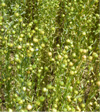
***
19 Juin- 31 Octobre: Exposition « Le textile dans tous ses états: une archéologie méconnue » (Clermont-Ferrand, Musée Bargoin).
Les textiles archéologiques connaissent aujourd’hui un véritable regain d’intérêt : fragiles et rares, ils sont pourtant de précieux informateurs.
À partir de pièces emblématiques du musée Bargoin et de pièces récemment découvertes dans la région, l’exposition « Le textile dans tous ses états : une archéologie méconnue » propose de faire le point sur cette discipline en plein essor. De l’âge du Fer à l’époque médiévale, ce sont à la fois toutes les étapes de la chaîne opératoire de production et les usages pratiques ou symboliques du textile qui bénéficient d’un éclairage nouveau.
***
7-8 mai 2015 : Conférence internationale “First Textiles: The Beginnings of Textile Manufacture in Europe and the Mediterranean” (Copenhagen)
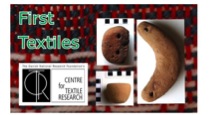
Programme (en anglais)
Extraits (en anglais)
***
Les objets comme source : les textiles. Séminaire organisé par Sophie Desrosiers et Marie Phliponeau. Lundi de 17 h à 19 h (salle 4, 105 bd Raspail 75006 Paris), du 2 mars 2015 au 18 mai 2015. Les douze séances de ce séminaire se sont tenues entre mars et mai 2015 avec de nombreux intervenants extérieurs.
***
Janvier – avril 2015 : Séminaire d’histoire et d’Archéologie des Mondes Orientaux (SHAMO) on “Textiles et Genre” Maison Archéologie et Ethnologie, Nanterre (Cécile Michel)
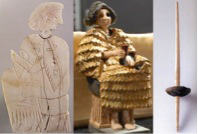
Publications
Coton de l’Ancien Monde : domestication, culture, usages et échanges
Revue d’Ethnoécologie [En ligne], 15 | 2019, mis en ligne le 30 juin 2019
https://journals.openedition.org/ethnoecologie/4063
Sous la direction de Charlène Bouchaud et Elsa Yvanez
Le coton (Gossypium sp.) est un symbole éloquent de la mondialisation moderne, évoquant tout à la fois la matière douce dominant l’industrie textile et des désastres écologiques et sociaux planétaires. Son internationalisation n’est cependant pas le résultat d’un processus récent et son histoire, impliquant quatre espèces domestiquées, forme un témoignage vibrant de la circulation des savoirs, des biens et des personnes. Le coton est ainsi un cas d’étude exemplaire d’histoire globale, requérant la convergence de différents points de vue. Tendant vers cet objectif, ce volume réunit les travaux présentés lors d’un colloque interdisciplinaire tenu en 2017 au Muséum d’Histoire Naturelle (https://gossypium.sciencesconf.org/).Les chercheurs qui y ont contribué viennent de différents champs disciplinaires, tour à tour spécialistes en génétique, histoire, archéologie, archéobotanique, études des textiles, anthropologie sociale et linguistique, et tous partageant un intérêt commun pour le coton. Les articles offrent ainsi un panorama des connaissances sur les processus de domestication, d’émergence et de diffusion du coton et de ses produits – fibres, graines, huile, et textiles – dans l’Ancien Monde, de l’Asie à l’Afrique, durant les trois derniers millénaires.
- Charlène Bouchaud, Elsa Yvanez et John Peter Wild
Tendre un fil de la graine à l’habit. Nouvelles recherches sur l’archéologie du coton dans l’Ancien Monde : l’apport de l’interdisciplinarité - Christopher Viot
Domestication et diversification variétale des cotons cultivés (Gossypium sp.) de l’Ancien Monde dans l’Antiquité - Louise Quillien
Dissémination et prix du coton en Mésopotamie pendant le ier millénaire BCE - Elsa Yvanez et Magdalena M. Wozniak
Le coton en Nubie et au Soudan anciens : sources archéologiques et implications historiques - Fleur Letellier-Willemin
Le coton à El Deir – Premières observations sur l’existence d’une nouvelle fibre textile dans l’oasis de Kharga (désert occidental égyptien, ve siècleAEC-ve siècle EC) - Orit Shamir
Textiles de coton en ancienne Palestine, de l’époque byzantine à l’époque médiévale - Jean-Charles Ducène
Le coton, sa culture et son utilisation selon les sources arabes médiévales - Lucie Smolderen
Des graines, des fibres et des bobines – Mémoire d’une filière textile artisanale dans le Dendi (Nord Bénin) - Christian Seignobos
Du coton traditionnel au coton colonial, le coup de force du progrès (Nord-Cameroun)
Publications
- Gaspa, S., Michel, C. & Nosch, M.-L. eds., 2017, Textile Terminologies from the Orient to the Mediterranean and Europe, 1000 BC to 1000 AD, Lincoln: Nebraska University-Lincoln Press, Zea E-Books 56, 538p, open access
- Brøns, C. & Nosch, M.-H. eds., 2017, Textiles and Cult in the Mediterranean in the first millennium BC, Ancient Textiles Series 31, Oxbow Books, Oxford (2017).
- Ebert, C., Harlow, M., Andersson Strand, E. & Bjerregaard, L. eds., 2016, Traditional textile craft – An intangible cultural heritage, edited by Copenhagen: Centre for Textile Research, University of Copenhagen. EBook: open access
- Fanfani, G., Harlow, M. & Nosch, M.-L. eds, 2016, Spinning Fates and the Song of the Loom: The Use of Textiles, Clothing and Cloth Production as Metaphor, Symbol and Narrative Device in Greek and Latin Literature, Ancient Textiles Series 24, Oxford: Oxbow Books.
- Lervad, S., Flemestad, P. & Weilgaard Christensen, L. Verbal and Nonverbal Representation in Terminology. Proceedings of the TOTh Workshop 2013 / La Représentation Verbale et Non-verbale en Terminologie. Actes de la Journée d’étude TOTh 2013 – Copenhague – 8 novembre 2013. Institut Porphyre / Copenhague, 2016206 pages.
- Lion, B. & Michel, C. eds., 2016, The Role of Women in Work and Society in the Ancient Near East, , SANER 13, Berlin et Boston.
- Dross-Krüpe, K. & Nosch, M.-L. eds., 2016, Textile trade and distribution from the Ancient Near East to the Mediterranean 1000 BC to 400 AD / Textilhandel und -distribution. Vom Alten Orient zum Mittelmeerraum, 1000 v.Chr. bis 400 n.Chr.,
- Andersson Strand, E. & Nosch, M.-L. eds. 2015, Tools, Textiles and Contexts. Investigating Textile Production in the Aegean and Eastern Mediterranean Bronze Age, , Ancient Textiles Series 21, Oxford: Oxbow Books.
- Harlow, M., Michel, C. & Nosch, M.-L. 2014, eds. Prehistoric, Ancient Near Eastern and Aegean Textiles and Dress: an interdisciplinary anthology, Ancient Textiles Series. Oxbow Books, Oxford.
- Harlow, M. & Nosch, M.-L. 2014, eds. Greek and Roman Textiles and Dress: an interdisciplinary anthology. Ancient Textiles Series. Oxbow Books, Oxford.
- Breniquet, C. & Michel, C. 2014, eds. Wool Economy in the Ancient Near East and the Aegean: from the Beginnings of Sheep Husbandry to Institutional Textile Industry, Ancient Textiles Series 17, Oxbow Books, Oxford.
- Nosch, M.-L., Koefoed, H., & Andersson Srand, E. 2013, eds. Production and Consumption of Textiles, Ancient Textiles Series 12, Oxbow Books, Oxford.
- Breniquet, C., Tengberg, M., Andersson Strand, E. & Nosch, M.-L., eds. 2012 Paleorient Fibres et techniques textiles de l’Orient ancien, Volume 38-1/2.
- Michel, C. & Nosch, M.-L. 2010, eds.Textile Terminologies in the Ancient Near East and Mediterranean from the Third to the First Millennnia BC, Ancient Textiles Series 8, Oxbow Books, Oxford, (http://www.mae.parisnanterre.fr/arscan/Textile-Terminologies-in-the.html).
- Gillis, C. & Nosch, M.-L. 2007, eds. Ancient Textiles: Production, Crafts and Society, Ancient Textiles Series 1, Oxbow Books, Oxford. Book reviewed by M. Harlow (Leicester University) in Medieval Clothing and Textile , vol 14 (2008).
Presentation
Textiles accompany man throughout his life from his swaddling clothes till his shroud and protect him against climatic variations. Textile craft is much older than the art of pottery or metallurgy, even if it is hard to find preserved evidences. It has persisted, in its traditional form, for millennia until the very beginning of the industrial revolution, which totally changed textile technology, its production and its organisation. However, textiles cannot be restricted to practical uses. They had a complex place in ancient and traditional societies.
The project of an International Research Network Ancient Textiles from the Orient to the Mediterranean (ATOM) aims to define both the impact of textile production on agriculture, husbandry and environment generally speaking, its role in handicrafts, in trade, and more generally in the economy, but also the uses of textiles in the construction of gender and individual and collective identities. The geographical area concerned by the project covers the Orient and the Mediterranean. This broad area has seen the beginnings of agriculture and husbandry and the development of ancient spinning and weaving techniques. Mesopotamia especially, has seen the emergence of centralized manufactures for textile production, based on a complex division of labour.
This project intends to promote interdisciplinary studies on textiles, involving many disciplines: archaeology, archaeobotany, archaeozoology, bioarchaeology, environmental studies, experimental archaeology, ethno-archaeology, history, philology, anthropology, etc. It gathers, in a joint programme, research units affiliated with the CNRS, universities, national museums and a centre of excellence specialised on textile researches.
The Network “ATOM” aims at facilitating contacts between researchers working on ancient textiles. A systematic approach to the ancient craft of textiles, via archaeology, texts and iconography, by involving all relevant specialists in highly specialized, collective projects, will yield a comprehensive picture of the economic and cultural impact of textiles and textile manufacturing on society. Furthermore, research will be embedded into the teaching activities for students and also for colleagues of the institutions involved, for example in joint master classes. Several students plan doctoral dissertations or masters’ theses on these topics. They will benefit from the Network “ATOM”, which will facilitate exchange among young scholars from several European countries.
Partenaires
Archéologies et Sciences de l’Antiquité (ArScAn), UMR 7041 (CNRS/Université Paris Nanterre/Université Paris1/MCC), France
Cécile Michel, directrice de recherche, CNRS, Coordinator of the GDRI ATOM
Damien Agut, chargé de recherche, CNRS
Barbara Couturaud, chercheure associée
Corinne Debaine-Francfort, directrice de recherche, CNRS
Xavier Faivre, ingénieur de recherche, CNRS
Francis Joannès, professeur, Paris 1
Louise Quillien, doctorante, Paris 1
Françoise Rougemont, chargée de recherche, CNRS
Aline Tenu, chargée de recherche, CNRS
Environnements et sociétés de l’Orient ancien (ARCHEORIENT), UMR 5133 (CNRS/Université Lyon 2), France
Philippe Abrahami, maître de Conférences, Lyon 2
Laura Battini, chargée de recherche, CNRS
Corinne Castel, chargée de recherche, CNRS
Jwana Chahoud, post-doct., chercheur associé
Moussab al Besso, doctorant, Lyon 2
Valérie Matoïan, chargée de recherche, CNRS
Emmanuelle Vila, chargée de recherche, CNRS
Pierre Villard, professeur, UPB
Centre de recherches historiques (CRH), UMR 8558 (CNRS/EHESS) France
Sophie Desrosiers, maître de Conférences, EHESS
Cecilia d’Ercole, directrice d’études, EHESS
Etienne de la Vaissière, directeur d’études, EHESS
Jean-Michel Carrié, directeur d’études émérite, EHESS
Centre d’Histoire « Espaces et Cultures » (CHEC), EA 1001, (UPB), France
Catherine Breniquet, professeure, UPB
Fabienne Colas-Rannou, maître de Conférences, UPB
Laurence Riviale, maître de Conférences, UPB
Center for Textile Research, (University of Copenhagen), Denmark
Eva Andersson Strand, Associate Professeur, University of Copenhagen
Nicole Brisch, Associate Professeur, University of Copenhagen
Cecilie Brøns, researcher Ny Carlsberg Glyptotek and CTR
Flavia Carraro, Marie Sklodowska Curie Fellow, CTR
Joanne Cutler, Marie Curie Fellow, CTR
Giovanni Fanfani, associate researcher
Peder Flemestad, research assistant CTR
Ellen Harlizius-KLück, associate researcher, CTR
Hedvig Landenius Enegren, Marie Curie Fellow, CTR
Romina Laurito, Marie Curie Fellow, CTR
Susanne Lervad, associate researcher, CTR
Marie-Louise Nosch, Professor, University of Copenhagen
Maria Papadopoulou, Marie Curie Fellow, CTR
Kaliopi Sarri, Marie Curie Fellow, CTR
Caroline Sauvage, Marie Curie Fellow, CTR
Malgorzata Siennicka-Rahmstorf, Marie Curie Fellow, CTR
School of Archaeology and Ancient History (University of Leicester), United Kingdom
Lynn Foxhall, Professor, SAAH
Mary Harlow, Senior Lecturer, SAAH
David Mattingly, Professeur, SAAH
External interested participants
Histoire Archéologie Littératures des mondes chrétiens et musulmans médiévaux (CIHAM) UMR 5648
Dominique Cardon, directrice de recherche émérite
Histoire Archéologie Littérature des Mondes Anciens (HALMA) UMR 8164
Brigitte Lion, professeur Lille 3
Musée du Louvre. Département des Antiquités Orientales, Paris
Ariane Thomas, conservatrice
Sophie Cluzan, conservatrice
Musée du Quai Branly, Paris
Christophe Moulhérat, chercheur
Museum National d’Histoire Naturelle, Paris, Archéozoologie, archéobotanique : sociétés, pratiques et environnements (AASPE) UMR7209
Margareta Tengberg, professeure
Antoine Zazzo, chargé de recherche, CNRS
Charlène Bouchaud, post-doc., Idex SUPER
Musée des tissus et des arts décoratifs, Lyon
Maximilien Durand, directeur du Musée
Musée Bargoin, Clermont-Ferrand
Christine Bouilloc, directrice du Musée
Centre de Recherche et de Restauration des Musées de France (CR2RMF), Champs-sur-Marne
Witold Nowik, chargé de recherche, Ministère de la Culture et de la Communication
Centro de Ciencias Humanas y Sociales. Departamento de Estudios de Próximo Oriente Antiguo, CSIC, Madrid, Spain
Juan Pablo Vita, Científico Titular
Università di Roma « La Sapienza » Dipartimento di Scienze dell’Antichità, Roma, Italy
Maria Giovanna Biga, Associato Professeura
Leibnitz Universität, Historisches Seminar, Hannover, Germany
Beate Wagner-Hasel, Professor
Archeotex, Ennenda, Switzerland
Antoinette Rast-Eicher, Researcher
Scientific program
Research in the teams involved in this Network is organized into six axes linked together. It is not limited to these themes, and other research axes may start and be developed within the four years of the Network. Researches will be coordinated through workshops, conferences and research seminars. Training will be done through master classes and summer schools. The five main research axes are the following:
- Textile techniques
- Textile production in the Middle Bronze Age Near East: interdisciplinary approach
- Textile terminologies
- Textiles and gender
- Textiles in rituals and cultic practices. – Training and dissemination
News and Events
2018
4-6 octobre 2018: International Conference on « Textiles & Gender: Production to wardrobe from the Orient to the Mediterranean in Antiquity »
Maison Archéologie et Ethnologie, Nanterre. Organised by Mary Harlow and Cécile Michel. Secretary: Louise Quillien
Textiles and gender intertwine on many levels, from the transformation of raw materials into fabric at one end, to dress and garments, and the construction of identity at the other.
Textile production in antiquity has often been considered to follow a linear trajectory from a domestic (female) activity to more ‘commercial’ or ‘industrial’ male-centred mode of production. In reality, many modes of production probably co-existed and the making of textiles is not so easily grafted onto the labour of one sex or the other. Some elements of the chaîne operatoire have been assigned to either men or women. It is rare, for instance, to find a culture where men did the spinning –there is however an attestation of this in the South of Iraq – and at the other end of the process, equally rare to find female fullers. At times and in some places, weaving was women’s work, but in other times and places it was the prerogative of men. Labour organization depends on who learns what, where, and how. Children of both sexes could be involved in some parts of the textile chaîne opératoire at home with their mother or father (fibre preparation, spinning or weaving), or adults could learn with someone who is already qualified. Learning involves also cognitive aspects. We would like to understand these process across Antiquity in the different cultures that are encompassed by our period. The production of textiles can indeed inform us of the relationships between gender, labour, economics and, in some cases, the potential for the prosperity of a family.
In other areas of life textiles transformed into garments express the gender of the wearer. Dress and gender are intimately linked in the visual and textual records of antiquity; it is common practice in both art and literature to use particular garments to characterise one sex or the other, and to undermine literary characterisations by suggesting that they display features usually associated with the opposite gender. Despite the fact that clothing shapes were simple (tunics and rectangular or curved-edge mantles) for both women and men, each sex looked very different. This difference was socially and culturally important and expressed in the type of textile used, the length of the tunic, the manner in which it was decorated or undecorated, belted or unbelted, use of colour and most fundamentally in the manner of draping or fastening. Body language was also defined by clothing and socially prescribed gendered roles. A person should have no doubt as to the sex of another person he or she might meet and cross-dressing or dressing in a manner perceived to be ‘manly’ (if a woman) or ‘effeminately’ (if a man) implied an insult and an inability to act in the proper culturally defined gendered way. As, despite their shared shaping, male and female clothing had to be demonstrably different, from the outset spinners and weavers were making choices about the type of wool and weave required – and we might add dyers into the mix. This puts gender at the very basis of textile work from the outset to the end product. Gender divisions were fundamental to ancient society (although they did not work in the same way in every culture) and their expression in textiles and clothing equally fundamental. The human race is hard wired for adornment thus even among the poorest classes the opportunity for some personalised and decorative aspect has to be taken into account.
The conference will examine the gender division of work in the production of textiles, as well as attitudes to dress and gender across the Near East and Mediterranean culture in antiquity (c. 3000 BCE-300CE), tracing both cross-cultural and culturally specific associations.
This conference is the concludingmeeting of the GDRI ATOM and a follow up event of the international research seminar on Gender and textiles which took place in Nanterre during the first semester of 2015 within the frame of the Séminaire d’Histoire et Archéologie de l’Orient Ancien (SHAMO) and the international workshop organised at the University of Leicester in April 2017 on “Textiles, Dress and Gender in the Ancient World.”
Programme of the conference : T&G conference programme
Abstracts of the conference : T&G conference abstracts>
***
18-22 juin 2018: Writing workshop at the Commanderie de Jalès, Berrias-Casteljau:
Writing of a study on : « Blue Dyes and Coloured Textiles in Cuneiform Texts »
Philippa Abrahami, Nicole Brisch, Cécile Michel et Louise Quillien
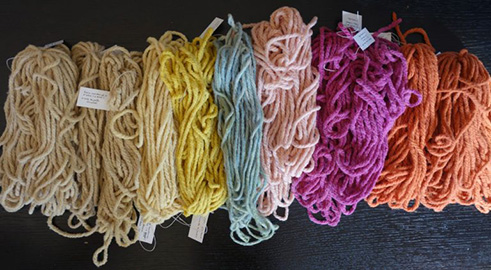
***
14-18 mai 2018: Marie Skłodowska-Curie Masterclass (ArScAn, MAE, CNRS, Paris 1, Paris Nanterre)
The UMR Archéologies et Sciences de l’Antiquité (ArScAn), in collaboration with the Maison Archéologie & Ethnologie, René-Ginouvès (Nanterre), is organising a second edition of the Masterclass for Marie Sklodowska-Curie individual scholarship (MSC IF) from 14 to 18 May 2018. The objective is to prepare young foreign colleagues, previously identified and selected on a pre-project basis, to submit an application in response to this European call for projects dedicated to strengthening the professional careers of researchers, and to prepare ArScAn post-doctoral fellows to prepare their applications for laboratories abroad.
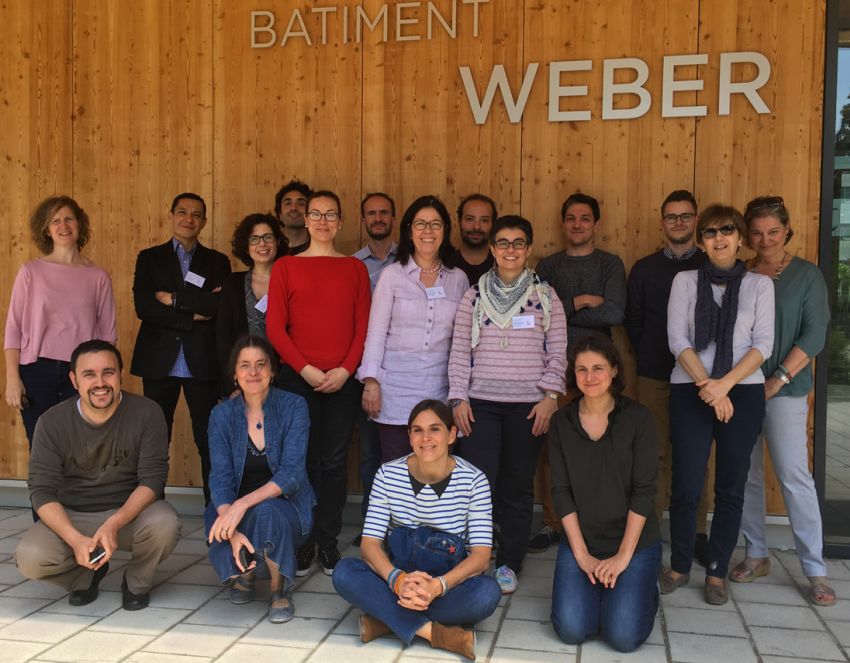
Masterclass MSC IF is organized by :
- Cécile Michel, Directrice de Recherche au CNRS, historienne du Proche-Orient cunéiforme, ArScAn, UMR 7041
- Laurence Quinty, CNRS, Service Valorisation et Partenariats, MAE, USR 3225
In collaboration with the representatives of the institutional services :
- Nizar Larabi, Service Partenariat et Valorisation, CNRS – Délégation Île-de-France Ouest & Nord
- Sandra Mereu, Aide au montage de projets de recherche, Direction de la recherche et de la valorisation, Université de Paris 1 Panthéon – Sorbonne
- Miguel Angel Rodriguez Lizana, Responsable du service de valorisation et appui à la recherche, Université Paris Nanterre
***
8-9 mars 2018: Textile production in Kültepe. A CTR interdisciplinary workshop
Centre for Textile Research, Saxo institute, University of Copenhagen invite you for an interdisciplinary workshop focussing on the Bronze Age textile production in Kültepe, Anatolia.
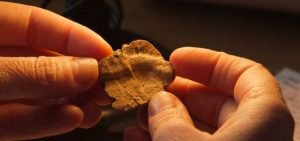
All interested students and researchers are welcome, but please register by mail to Anne Drewsen, rsq364@hum.ku.dk at the latest on 6 March.
The workshop will take place at Copenhagen University
2017
16-20 Octobre 2017. Thematic School TexAntiques
« Ancient Textiles: Materials, techniques, economy and uses » inscription before July 1st, 2017 (below)
(Maison Internationale Universitaire de Clermont-Ferrand)
Research on textiles has developed over the last decade to form a new disciplinary field for which technical skills are essential to take into account and interpret various sources: archaeological, environmental, textual, iconographic … This thematic school proposes a training taking into account new methods of research. Practical courses and workshops given by historians, archaeologists, art historians, archaeobotanists and archaeozoologists and specialists in museology will cover the following three main themes:
Textile materials and techniques, archaeological discoveries and preservation
– The first textiles are made from vegetal fibers, especially linen grown from the beginning of agriculture (ca. 9 000 BC). The exploitation of wool is a consequence of domestication and selective practices within the herds. Wool has played a leading role in technical innovations (new spinning methods, invention of the vertical loom). In this block will be presented the different techniques applied to the discovery of textile, their preservation and their study. A workshop will be devoted to archaeological experiments on textiles.
– Economic role of fibres and textiles, society and environment
In the Ancient Near East, the major textile factories were created as early as the third millennium, with yield and production quotas, and an organization involving a servile workforce composed mainly of women and children. Wool, in addition to its use as the main weaving material, is distributed as ration to workers. At the beginning of the second millennium, international textile trade is developing in parallel with the exchange of diplomatic gifts. In the first millennium, dye products are traded internationally and wool is used to finance trade with the outside world. It will be necessary to show the impact of these transformations that have radically changed the natural environment (introduction of transhumance practices, appearance of species adapted to the steppe, complementarity of ecosystems), political landscape and exchange networks through the Near East and the East of the Mediterranean. The workshop on ‘Textile and Gender’ will deal with women in textile production, but also with garments and gender from the perspective of texts and iconography.
– Textile terminologies, uses of textiles
The terminologies and classifications in use have largely been inspired by current textiles and instruments, which do not correspond exactly to those of the past. Thus,in our vocabulary, textiles and fabrics are often confused. Preliminary definitions and basic principles are therefore to be posed. The textile is a more inclusive category, making it possible to include non-woven objects such as felt or needle production. Numerous terms describe textiles, their techniques and their uses. Through this complex terminology we can see the contacts, innovations, trade routes and economic structures of pre-monetary societies. Textile terminologies developed in parallel with technical innovations, discoveries, modes and commercial networks. We will give keys and a methodology to interpret and analyze this vocabulary. The cuneiform textual documentation and the linear B texts will serve as examples to illustrate the terminological study. In addition, the textile uses are extremely numerous and varied: clothing, furnishings, transport of goods, sails of boats, etc. A combined study of vocabulary, artefacts and iconography allows us to better understand these multiple uses.
Inscription form to TexAntiques to send before July 1st, 2017 to cecile.michel@cnrs.fr
***
19-23 juin 2017: Writing workshop at the Commanderie de Jalès, Berrias-Casteljau:
Rédaction à huit mains d’une étude intitulée: « Red Dyes and Coloured Textiles in Cuneiform Texts »
Philippa Abrahami, Nicole Brisch, Cécile Michel et Louise Quillien
***
15-19 mai 2017: Marie Skłodowska-Curie Masterclass (ArScAn, MAE, CNRS, Paris 1, Paris Nanterre): Une nouvelle initiative pour attirer les jeunes talents
L’UMR Archéologies et Sciences de l’Antiquité (ArScAn), en collaboration avec la Maison Archéologie & Ethnologie, René-Ginouvès (Nanterre), a organisé du 15 au 19 mai 2017 une Masterclass à destination de candidats à une bourse individuelle Marie Skłodowska-Curie (MSC IF). L’objectif était de préparer de jeunes collègues étrangers, préalablement identifiés et sélectionnés sur pré-projet, à soumettre une candidature en réponse à cet appel à projets européen dédié au renforcement du parcours professionnel des chercheurs.
Au cours de cette Masterclass, ces jeunes chercheurs ont eu plusieurs entretiens personnalisés sur leur projet avec, à la fois leur futur responsable scientifique, des experts et les représentants des services d’accompagnement de la recherche de chacune des tutelles impliquées : DR 5 du CNRS, Université Paris 1 Panthéon – Sorbonne, Université Paris Nanterre. Ces échanges personnalisés ont alterné avec des présentations sur les différents aspects du dossier de candidature, sur les institutions-hôtes, les structures d’appui aux projets européens, ainsi que sur certains points-clés du dossier tel que l’Open Access. Cette Masterclass a également pu bénéficier de l’expérience d’un boursier MSC IF récemment accueilli dans le laboratoire ArScAn.
Avant même le dépôt final des projets des candidats et les résultats de l’appel d’offres MSC IF, de l’avis de tous les participants, cette première édition fut très positive. Candidats et responsables scientifiques ont appris à mieux se connaître et à mieux maîtriser les aspects divers d’une candidature à un projet européen. En outre, les candidats ont pu se familiariser avec leur future institution d’accueil et ont désormais tous les éléments en main pour améliorer et finaliser leur projet.

Masterclass MSC IF organisée par :
- Cécile Michel, Directrice de Recherche au CNRS, historienne du Proche-Orient cunéiforme, ArScAn, UMR 7041
- Laurence Quinty, CNRS, Service Valorisation et Partenariats, MAE, USR 3225
En collaboration avec les représentants des services d’accompagnement de la recherche des institutions hôtes :
- Nizar Larabi, Service Partenariat et Valorisation, CNRS – Délégation Île-de-France Ouest & Nord
- Sandra Mereu, Aide au montage de projets de recherche, Direction de la recherche et de la valorisation, Université de Paris 1 Panthéon – Sorbonne
- Miguel Angel Rodriguez Lizana, Responsable du service de valorisation et appui à la recherche, Université Paris Nanterre
- Romane Cariou, Service de valorisation et appui à la recherche, Université Paris Nanterre
Autres experts :
Alexandra Legrand-Pinaud (USR 3225-MAE et UMR 7055 PRETECH), Pascale Linant de Bellefonds (ArScAn)
Autres intervenants :
Léa Bello (DR5 du CNRS), Astrid Brandt-Grau (Ministère de la Culture et de la Communication), Piero Gilento (Boursier MSC IF, ArScAn), Frédéric Hurlet (Directeur de la MAE), Pascal Marty (InSHS du CNRS), Lionel Maurel (Université Paris Lumières), Marie-Louise Nosch (Université de Copenhague), Anaïs Pamboukjian (Université Paris 1 Panthéon – Sorbonne), Koralia Pavlaki (CNRS, Point de Contact National), Laurence Quinty (USR 3225-MAE), Isabelle Rivoal (Université Paris Nanterre), François Villeneuve (Directeur d’ArScAn).
***
3-4 May 2017: Cotton in the Old World: Domestication, cultivation, use and trade (MNHN, Paris)
Muséum National d’Histoire Naturelle, 43 rue Buffon, 75005 Paris
This conference is organized by Charlène Bouchaud, Vladimir Dabrowski, Margareta Tengberg
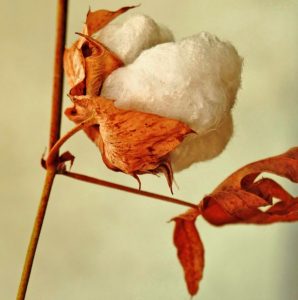
The meeting seeks to join together researchers coming from different scientific fields, such as agronomy, anthropology, archaeobotany, genetic, geochemistry, history, linguistic, and textile studies, and sharing a common interest in cotton. It aims to review the current state of our knowledge on the domestication, the emergence and the diffusion of the cotton plant and its various products – fibres, oil, textiles, etc. – in order to highlight the recent research, its current issues and future challenges. This first meeting is focusing on cultivated cottons in the Old World, especially the Indian subcontinent, the south-west Asia, the Africa and the Mediterranean regions (Gossypium herbaceum et Gossypium arboreum), while considering studies, methods and protocols developed for American cottons (Gossypium barbadense, Gossypium hirsutum). The large chronological and geographical framework will allow the perception and understanding of long term dynamics that raised cotton from a tropical wild plant to a valuable crop at the heart of the agriculture and economics of the ancient and modern world.
***
24-25 April 2017: Textiles, Dress and Gender in the Ancient World (University of Leicester)
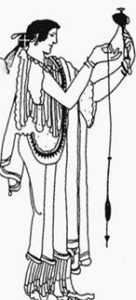
Dress and gender are intimately linked in the visual and textual records of antiquity; it is common practice in both art and literature to use particular garments to characterise one sex or the other, and to undermine literary characterisations by suggesting that they display features usually associated with the opposite gender. Cross dressing was, indeed, often used for comic purpose in drama and for character assassination in forensic court speeches. The clear message, across the cultures of antiquity, was that men should dress like men, and women like women.
Less consideration has been given to the notion that certain textiles and colours were considered more suitable to either men or women. Discussions of textile type and quality tend to focus on role of luxury and social status (or the assumption/usurpation of status) rather than gender, although gender is often implicit in any discussion.
Textile production in antiquity has often been considered to follow a linear trajectory from a domestic (female) activity to more ‘commercial’ or ‘industrial’ male-centred mode of production. In reality, many modes of production probably existed side-by-side and the making of textiles not so easily grafted on the labour of one sex of another. At times and in some places weaving was women’s work, but in other times and places it was the prerogative of men.
The workshop will examine attitudes to textiles, dress and gender across the Near East and Mediterranean culture in antiquity (c. 3000 BCE-300CE), tracing cross-cultural and culturally specific associations.
***
3-6 April 2017: Textiles Session within the Melammu symposia 11: « Evidence Combined – Western and Eastern Sources in Dialogue » Finnish Institute in the Middle East, Beyrouth)
Session 4: « Textiles » organised by Mary Harlow & Cécile Michel
Textile craft is very old and has persisted, in its traditional form, for millennia until the beginning of the industrial revolution. The analysis of textile tools can help to understand the spinning, braiding and weaving techniques used in the past and the possible influences and exchanges of practice that may have taken place between East and West.< Textiles accompany man throughout his life, and, particularly in the form of dress play a ley part in the construction of gender, individual and collective identities. Despite the fact that clothing shapes were simple, social and cultural differences could be expressed in the type of material, decorations, length of the garment, etc. This panel asks is the language of dress universal in antiquity or can we link specific attitudes/styles to western or eastern sources? Can we see elements of exchange and influence? Programme: Hedvig Landenius Enegren: Textile and Textile Tool Expressions in 2nd and 1st millennium BCE Cyprus
Barbara Couturaud: How to understand a garment? Considerations on a feminine dress in Mari (IIIrd mill. BC)
Anne-Caroline Loisel-Rendu: Cloth and Gender in Akkadian Literature
Cecilie Brøns: Dress-codes in ancient Greek sanctuaries
2016
Le jeudi de 14h à 16h du 22 septembre au 15 décembre : « Le textile au Proche-Orient ancien : production, traitement et circulation des matières premières »
Séminaire de Recherche de l’UMR Archéorient. Actualité des méthodes et des terrains au Proche-Orient, en collaboration avec le GDRI ATOM (Ancient Textiles from the Orient to the Mediterranean). Salle Joseph Reinach (4e étage), Maison de l’Orient et de la Méditerranée, Lyon.
***
27-28 septembre 2016 : « Le vêtement au Moyen Âge : de l’atelier à la garde-robe »
Colloque organisé par le Groupe d’archéologie médiévale (GAM-EHESS)
***
29-31 août 2016 : « Dyes and Spices. Interdisciplinary exploratory international workshop », Copenhague et Lejre, Danemark.
This exploratory workshop will deal with the vocabulary used for dyes, mordents and spices. Textual data will be confronted to experimental archaeology: types of dye stuffs used in antiquity will be tested experimentally, and we will compare the results with ancient dye receipts, and explore the relationship between spices and dyes in ancient texts.
This workshop will start at Centre for Textile Research, SAXO-Institute, University of Copenhagen In this session various ancient textual sources about dyes and spices, will be presented by the organizers and by the participants. This includes Linear B, ancient Greek and Latin texts, and cuneiform texts (Old Assyrian, Old Babylonian, Nuzi, Neo-Babylonian, etc.). . In the evening, we will serve a spiced and dyed dinner in the center.
The second day will take place with one days at Sagnlandet Lejre where experts in experimental archaeology Ida Demant and Eva Andersson Strand will conduct session of experimental testing of various plant dyes, eventually also insect dyes.
Participants are welcome to bring dyes to be used and tested in the sessions.
The third day (half day) will take place at CTR and is dedicated to a discussion and conclusion of our achievement’s and results and further plans for the future.
Dyes and Spices / Teintures et Épices from Maison Archéologie & Ethnologie on Vimeo.
***
31st August – 4th September 2016 : « Tradition and Innovation in Textile Technology in Bronze Age Europe and the Mediterranean », European Association of Archaeologists in Vilnius
The textile craft, with its complex technology and socio-cultural significance, has been a key craft in the societies of Bronze Age Europe and the Mediterranean. Although complex and socially and economically important, textile technology has been often considered rather traditional and non-innovative throughout many centuries of the Bronze Age.
The present session aims to examine textile technology in search of its traditional and innovative elements, by investigating the evidence of archaeological textiles, textile tools and their changes over time, the botanical and faunal environment, textual sources and the imagery of textiles and cloths. The session will focus on the Bronze Age in Europe and the Mediterranean, although papers on transitional periods from the Neolithic to the Early Bronze Age, and from the Late Bronze Age to the Early Iron Age are also welcome. We particularly welcome all papers discussing the various aspects of traditions and innovations traced in textile technology, especially those regarding raw materials and their processing, textile techniques, textile tools and equipment, the organisation of textile production and the dynamics of its specialisations, cross-cultural and cross-craft interactions, and changes in the textile craft in relation to socio-cultural transformations of the past societies.
***
1er juillet 2016 : « Journée d’étude autour de la publication de l’ouvrage Silk me Back ». Musée National des Arts Asiatiques – Guimet.
Le « Silk me Back » est une démarche artistique mettant en lien de multiples expressions contemporaines autour de la thématique de la soie.
Afin de montrer toute la richesse et l’arborescence de cette fibre textile, la Collection Soyeuse-Abécédaire libre d’un monde en soie propose de croiser différents regards à la fois scientifiques, technique et artistiques.
Initiée suite aux événements de Fukushima, le premier opus explore les liens soyeux entre France et Japon, au gré d’un projet au long cours de trois années. Déroulant ce fil encore plus loin, le Silk me Back se décline aujourd’hui sur différents projets culturels, ici et ailleurs.
Le musée national des arts asiatiques – Guimet, partenaire privilégié de cette démarche propose une journée d’études à l’occasion de la sortie du numéro 1 de cette collection « J comme Japon ».
Cette journée s’attachera à présenter ce premier volet sur les relations soyeuses entre France et Japon. La directrice d’ouvrage Isabelle Moulin en racontera la genèse et la constitution Le politologue Philippe Dujardin reviendra sur l’histoire de la soie dans la ville de Lyon. Enfin, Aurélie Samuel, conservatrice à la section textile du musée Guimet, présentera les rouleaux du Dit du Genji du maître Yamaguchi, exceptionnellement présentés et exposés à cette occasion. La journée se terminera par une séance de dédicace de l’ouvrage à la librairie du musée. Réservation obligatoire.
***
Juin 2016 : Parution de la revue Perspective. Actualité en histoire de l’art, 1|2016, consacrée aux Textiles.
Accessible en ligne ici.
***
9-10 Juin 2016: « Gifts, Commodities and Tributes. The Circulation of Textiles and the Ancient Economy. » Colloque international à l’Université de Leibniz (Hannovre).
Un appel pour sauver le musée des Tissus de Lyon par les chercheurs réunis à ce colloque.
Les historiens de l’économie ont longtemps négligé les textiles, bien que, des sources parmi les plus anciennes, comme celles en linéaire B, documentent la prééminence de la production textile dans l’économie au IIe millénaire av. J.-C. De nombreux travaux ont été publiés ces dernières années concernant la production et la distribution des textiles à travers l’espace et le temps. Ce colloque a pour but d’étendre ces recherches pour explorer les différents contextes de la circulation des textiles dans les sociétés anciennes : la fonction des textiles comme offrandes aux dieux ou aux morts, comme cadeaux de mariage ou présents offerts aux invités ou clients, comme marchandises pour les marchés locaux ou comme tributs aux chefs politiques. Des recherches ethnographiques ont montrées que les choses matérielles ont également leur histoire, et que, selon le contexte, les textiles sont utilisés en cadeau, en trophée, comme marchandise ou pour le paiement d’une taxe. Le colloque a pour but de retracer le flux et la circulation des textiles et de leurs matières premières (laine, lin, soie…) à travers l’espace géographique et social.
2015
21st November 2015: “Textiles and Fibres Through Time.” Autumn Symposium & AGM 2015 Call for Posters (Dublin).
Posters on topics relevant to the theme of the conference are very welcome.
Textiles and Fibres Through Time is a thematic one-day symposium that will bring together a variety of speakers from different disciplines. In the past, a wide range of raw materials including wool, animal hair, flax, hemp, grasses, reeds, briars, willow and bark have been used to create artefacts such as clothing, bedding, floor-coverings, sails, baskets, ropes and many other items. These activities have ranged in scale from craftwork to fulfil household needs, through cottage industries to factory production. The aim of the symposium is to explore the history, archaeology, economics and sociology of the raw materials, production, and use of textiles and fibres, with a particular emphasis on Ireland. Speakers may wish to consider issues such as: How did the development of new or improved agricultural and production techniques affect society? How were choices in clothing design and/or production a reflection of identity? What were the driving forces in the evolution of textile or fibre production? Who were the gainers and losers?
Speakers and poster presentations are invited from a diverse range of backgrounds including archaeology, history, economics, folk-life and sociology. Papers will be 20 minutes in length, with time for questions. A poster session with mini-presentations of 5 minutes will also be held.
This exciting symposium will take place on Saturday, 21st November at the Helen Roe Theatre, 63 Merrion Square, Dublin 2.
Abstracts of no more than 200 words, plus your details, including affiliation (if applicable) should be emailed to novembersymposium2015ahsi@gmail.com by 18th September 2015. Posters will be on display on Saturday, 21st November during the main lecture programme. There will also be a 5-minute mini presentation during which presenters will have the opportunity to introduce their posters to conference participants.
***
11-14 November 2015: International workshop on « Textiles Trade and Distribution 2: From the Ancient Near East to the Mediterranean 1000BC to 400 AD » (Kassel).
Textiles have always been among the most popular goods of mankind. Thus it is surprising that ancient textile production only within the last decades has been given particular attention in Classical Studies. However it is remarkable that at the same time textile trade and distribution has gained little attention so far. This desideratum was the point of departure for the first international conference “Textile Trade and Distribution in Antiquity”, held at Philipps-University Marburg (Germany) in 2013. This follow-up conference is based on a collaboration between the Department of Ancient History at Kassel University and the Danish National Research Foundation’s Centre for Textile Research and will expand the outcomes of the Marburg conference by the integration of modern economic stimuli. 30 researchers from 15 countries will give lectures covering the fields of Ancient History, Near Eastern Studies, Archaeology, Textile Research, Modern Economics, and Life Sciences. To enable an analysis of textile exchange processes we decided to follow a strict terminological distinction between trade and distribution deriving from modern Economics. We consider it important to be well aware of the actual meaning of this vocabulary to create a common basis for communication for all attendees:
Trade: Purchase of goods from one (or several) producer(s) or supplier(s), transportation, stockage and sale of these goods to customers without modifying or processing them significantly. Traders (or trading companies) normally act with the intention of profit making.
Distribution: Any process of making a product or service available for use or consumption by a consumer or user.
So not all exchange processes are automatically to be called trade; not every ‘exotic’ object came to the place where it was found by means of trade. Other distribution channels such as presents, subsidies, tributes, and booty, should not be neglected, though it is certainly often difficult to identify them. The conference aims to enable and facilitate interdisciplinary exchange and the discussion of new methodological approaches. Overcoming traditional boundaries between academic disciplines, identifying research gaps and discussing new research focuses are declared objectives.
***
6-7 October 2015: International workshop on “Textiles in Ritual and Cultic Practices in the Ancient Near East from the Third to the First Millennium BC” (Copenhagen).
The workshop aims at presenting current research on textual, iconographical, and archaeological evidence for the use of textiles in ritual and cult in the Ancient Near East. The main purpose is to address questions related to the use of raw materials, garments of ritual performers and cult images, textile tools in ritual and cultic practices as well as textile metaphors and analogical formulas in rituals. The timeframe will be from the third to the first millennium BC. It will encompass the entire Ancient Near East, including Egypt and Iran.
***
15-31 July 2015: French-Danish mission on Early and Middle Bronze Age textile imprints on clay (Kültepe, Turkey). Participation to the 2nd Kültepe International Meeting (Kültepe).
***
3-5 July 2015: Meeting of network members at the Festival du Lin et de l’aiguille / The Flax and Needle Festival, Vallée du Dun, 3-5 July 2015
Festival du lin et de l’aiguille, Vallée du Dun, 3-5 juillet 2015, Visite de l’usine Terre de lin à Fontaine-le-Dun et arrachage du lin vers le château de Silleron (Angiens) . Il existe des variétés de lin différentes pour fabriquer de l’huile ou pour obtenir des fibres textiles. Le texte présenté ci-dessous concerne la plante à fibres textiles. Read more (in French)
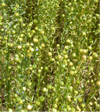
Visit to the Terre de lin museum in Fontaine-le-Dun and pulling up flax at the château de Silleron by the ATOM group (in English)
***
19 June – 31 October: Exhibition « Le textile dans tous ses états: une archéologie méconnue » (Clermont-Ferrand, Musée Bargoin).
Today, there are more and more interest for archaeological textiles: fragile and rares, they however provide a lot of data.
Based on textiles preserved at the Musée Bargoin and on other samples discovered recently in the area, the exhibition « Le textile dans tous ses états: une archéologie méconnue » explains this archaeology. From the Iron age to the Medieval period, it covers the whole chaîne opératoire of production, as well as practical and symbolic uses of textiles.
***
7-8 May 2015: International conference “First Textiles: The Beginnings of Textile Manufacture in Europe and the Mediterranean” (Copenhagen)
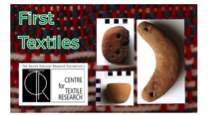
***
January – April 2015: Séminaire d’histoire et d’Archéologie des Mondes Orientaux (SHAMO) on “Textiles and Gender” Maison Archéologie et Ethnologie, Nanterre (Cécile Michel)
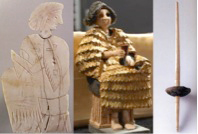
Publications
Cotton in the Old World : Domestication, cultivation, uses and exchange
Revue d’Ethnoécologie [En ligne], 15 | 2019, mis en ligne le 30 juin 2019
https://journals.openedition.org/ethnoecologie/4063
Sous la direction de Charlène Bouchaud et Elsa Yvanez Today
Cotton (Gossypium sp.) is an eloquent symbol of modern globalisation, conjuring images of both a soft material dominating the textile market and social and environmental disasters of global magnitude. Its internationalisation however is not the result of a recent process: the history of cotton and its four domesticated species shows one of the most outstanding examples of the circulation of knowledge, goods and people. Cotton is therefore a perfect case study for Global History, requiring the meeting of different points of view. With this aim in mind, the present volume brings together studies presented during a conference organised in 2017 at the Museum of Natural History in Paris (https://gossypium.sciencesconf.org/). Contributing scholars come from different scientific fields, such as genetic, history, archaeology, archaeobotany, textile studies, anthropology, and linguistics, but all share a common interest in cotton. The papers offer an overview of the available knowledge on the domestication, emergence and diffusion of the cotton plant and its various products – fibres, seeds, oil, and textiles– in the Old World, from Asia to Africa, over the last three millennia.
- Charlène Bouchaud, Elsa Yvanez et John Peter Wild
Tightening the thread from seed to cloth. New enquiries in the archaeology of Old World cotton – A case for inter-disciplinarity - Christopher Viot
Domestication and varietal diversification of Old World cultivated cottons (Gossypium sp.) in the Antiquity - Louise Quillien
Dissemination and price of cotton in Mesopotamia during the 1st millennium BCE - Elsa Yvanez et Magdalena M. Wozniak
Cotton in ancient Sudan and Nubia – Archaeological sources and historical implications - Fleur Letellier-Willemin
Cotton at el-Deir. First observations on a new textile fibre in the Kharga oasis (Egyptian Western desert, 5th century BCE-5th century CE) - Orit Shamir
Cotton textiles from the Byzantine period to the Medieval period in ancient Palestine - Jean-Charles Ducène
The cultivation and uses of cotton in medieval Arab sources - Lucie Smolderen
Seeds, fibres and bobbins. Memoirs of a textile craft in Dendi, North Benin - Christian Seignobos
From traditional to colonial cotton: the coup de force of progress in North Cameroon
Publications
- Gaspa, S., Michel, C. & Nosch, M.-L. eds., 2017, Textile Terminologies from the Orient to the Mediterranean and Europe, 1000 BC to 1000 AD, Lincoln: Nebraska University-Lincoln Press, Zea E-Books 56, 538p, open access
- Brøns, C. & Nosch, M.-H. eds., 2017, Textiles and Cult in the Mediterranean in the first millennium BC, Ancient Textiles Series 31, Oxbow Books, Oxford (2017).
- Ebert, C., Harlow, M., Andersson Strand, E. & Bjerregaard, L. eds., 2016, Traditional textile craft – An intangible cultural heritage, edited by Copenhagen: Centre for Textile Research, University of Copenhagen. EBook: open access
- Fanfani, G., Harlow, M. & Nosch, M.-L. eds, 2016, Spinning Fates and the Song of the Loom: The Use of Textiles, Clothing and Cloth Production as Metaphor, Symbol and Narrative Device in Greek and Latin Literature, Ancient Textiles Series 24, Oxford: Oxbow Books.
- Lervad, S., Flemestad, P. & Weilgaard Christensen, L. Verbal and Nonverbal Representation in Terminology. Proceedings of the TOTh Workshop 2013 / La Représentation Verbale et Non-verbale en Terminologie. Actes de la Journée d’étude TOTh 2013 – Copenhague – 8 novembre 2013. Institut Porphyre / Copenhague, 2016206 pages.
- Lion, B. & Michel, C. eds., 2016, The Role of Women in Work and Society in the Ancient Near East, , SANER 13, Berlin et Boston.
- Dross-Krüpe, K. & Nosch, M.-L. eds., 2016, Textile trade and distribution from the Ancient Near East to the Mediterranean 1000 BC to 400 AD / Textilhandel und -distribution. Vom Alten Orient zum Mittelmeerraum, 1000 v.Chr. bis 400 n.Chr.,
- Andersson Strand, E. & Nosch, M.-L. eds. 2015, Tools, Textiles and Contexts. Investigating Textile Production in the Aegean and Eastern Mediterranean Bronze Age, , Ancient Textiles Series 21, Oxford: Oxbow Books.
- Harlow, M., Michel, C. & Nosch, M.-L. 2014, eds. Prehistoric, Ancient Near Eastern and Aegean Textiles and Dress: an interdisciplinary anthology, Ancient Textiles Series. Oxbow Books, Oxford.
- Harlow, M. & Nosch, M.-L. 2014, eds. Greek and Roman Textiles and Dress: an interdisciplinary anthology. Ancient Textiles Series. Oxbow Books, Oxford.
- Breniquet, C. & Michel, C. 2014, eds. Wool Economy in the Ancient Near East and the Aegean: from the Beginnings of Sheep Husbandry to Institutional Textile Industry, Ancient Textiles Series 17, Oxbow Books, Oxford.
- Nosch, M.-L., Koefoed, H., & Andersson Srand, E. 2013, eds. Production and Consumption of Textiles, Ancient Textiles Series 12, Oxbow Books, Oxford.
- Breniquet, C., Tengberg, M., Andersson Strand, E. & Nosch, M.-L., eds. 2012 Paleorient Fibres et techniques textiles de l’Orient ancien, Volume 38-1/2.
- Michel, C. & Nosch, M.-L. 2010, eds.Textile Terminologies in the Ancient Near East and Mediterranean from the Third to the First Millennnia BC, Ancient Textiles Series 8, Oxbow Books, Oxford, (http://www.mae.parisnanterre.fr/arscan/Textile-Terminologies-in-the.html).
- Gillis, C. & Nosch, M.-L. 2007, eds. Ancient Textiles: Production, Crafts and Society, Ancient Textiles Series 1, Oxbow Books, Oxford. Book reviewed by M. Harlow (Leicester University) in Medieval Clothing and Textile , vol 14 (2008).


